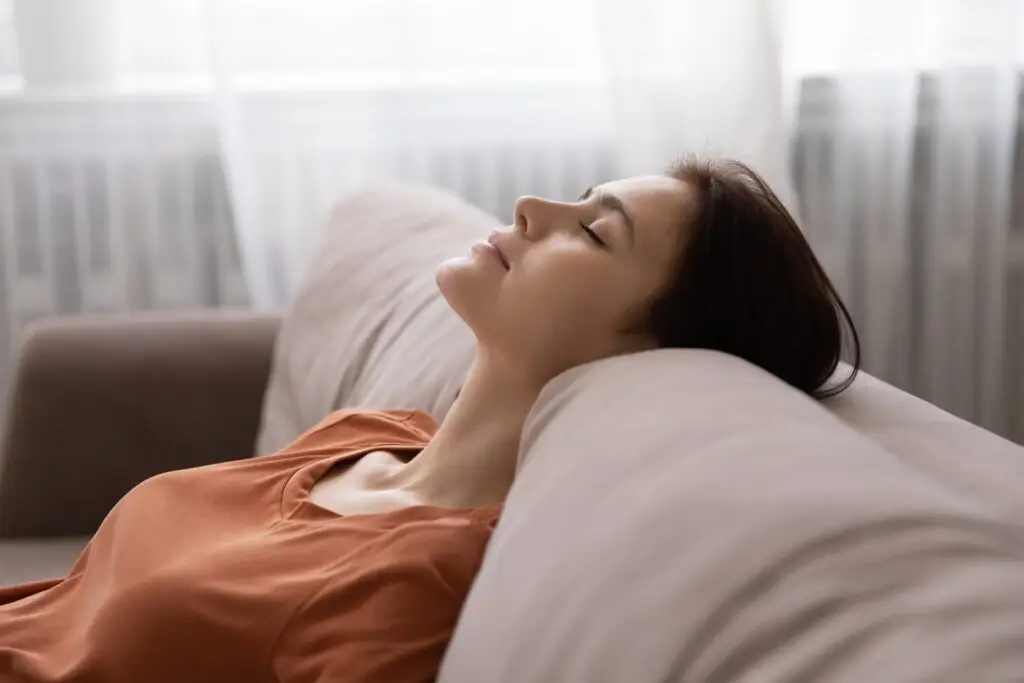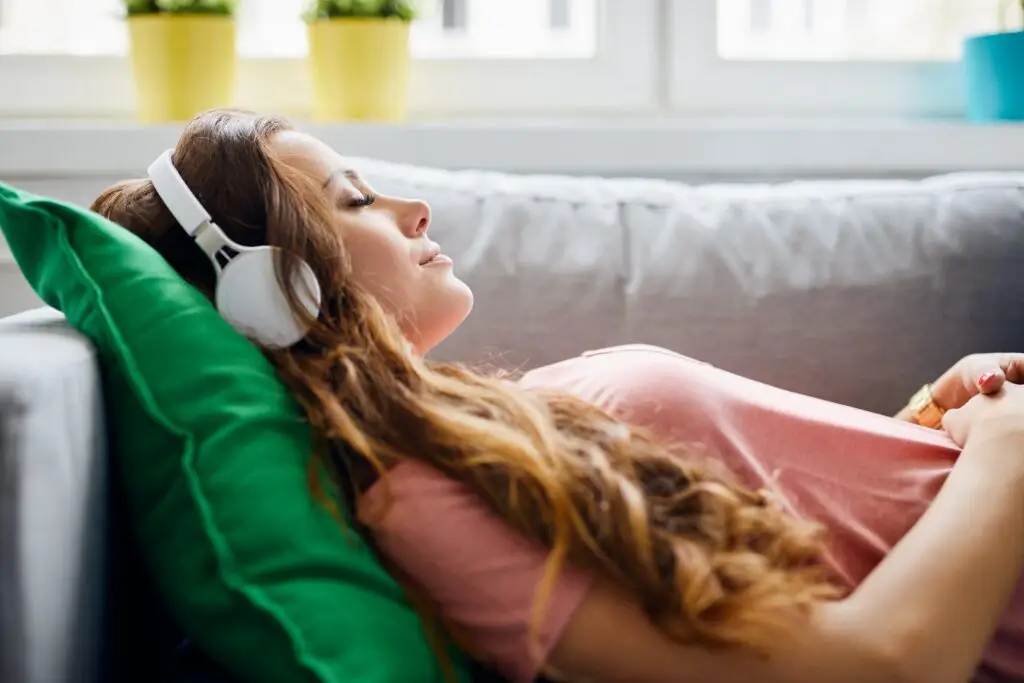If you’re struggling with anxiety, stress, or depression, you know how overwhelming these feelings can be. Your mind races, your body tenses up, and it feels like you can’t find a moment of peace. You may not know how tense your body is because it is always tense.
Reducing stress while you are in the thick of it may feel like a far-fetched dream. What if we told you there is an effective technique to help you release that tension and find a sense of calm?
Progressive muscle relaxation (PMR) is a powerful tool that can help you reduce the symptoms of stress even on the first try. By learning how to relax your muscles systematically, you can calm your mind and body, leading to better mental health and reducing the severity of symptoms from anxiety and depression.
In this guide, you’ll learn what progressive muscle relaxation is, how it works, and how to use it to manage stress and anxiety. This post will also explore different PMR techniques and provide step-by-step instructions so you can start practicing today.
What is progressive muscle relaxation?
Progressive muscle relaxation is a technique that involves tensing and slowly releasing each muscle group in your body. The goal is to help you become more aware of physical tension and learn how to release it, which can reduce stress and anxiety. PMR is based on the idea that mental calmness is a natural result of physical relaxation.
When did progressive muscle relaxation gain popularity?
American physician Edmund Jacobson developed Progressive muscle relaxation in the early 1920s. He introduced this technique to help patients manage stress and anxiety by learning to relax their muscles systematically.
Over the years, PMR has become a widely used, effective standard relaxation technique, particularly in psychology and stress management.
Benefits of progressive muscle relaxation
Progressive muscle relaxation offers numerous benefits for those dealing with anxiety, stress, or depression:
1. Reduces physical tension
PMR helps you become more aware of physical tension and teaches you how to release it, leading to a relaxed body and a calmer mind.
2. Improves mental health
Regular practice of PMR can reduce symptoms of anxiety and depression by promoting a sense of calm and relaxation. It can also help you manage stress more effectively.
3. Enhances sleep quality
Practicing PMR before bedtime can help you relax, making it easier to fall asleep and improving the overall quality of your sleep.
4. Boosts self-awareness
By focusing on each muscle group, you become more in tune with your body, which can help you better understand how stress and anxiety affect you physically.

The different PMR techniques
There are several techniques for practicing progressive muscle relaxation, each with its focus and approach. Here are some of the most effective PRM methods:
1. The full-body PMR technique
Overview: This is the classic approach to progressive muscle relaxation, where you work through each muscle group in your body, from head to toe, tensing and then relaxing them individually.
How to do it:
- Find a comfortable position: Sit or lie in a quiet place where you won’t be disturbed.
- Focus on your breathing: Take a few deep breaths to center yourself.
- Start with your feet: Tense the muscles in your feet by curling your toes and holding the tension for 5-10 seconds. Then, slowly release the tension and notice the difference in how your muscles feel.
- Move up your body: Next, move on to your calves, thighs, abdomen, chest, arms, hands, shoulders, neck, and face. For each muscle group, tense the muscles for 5-10 seconds, then release and relax.
- Finish with deep breathing: After you’ve relaxed all your muscles, take a few deep breaths and enjoy the feeling of relaxation.
2. The abbreviated PMR technique
Overview: The abbreviated technique is a quicker version of the full-body PMR, where you focus on fewer muscle groups, making it ideal for when you’re short on time or need a quick relaxation break.
How to do it:
- Select key muscle groups: Choose three to five main muscle groups to focus on, such as your shoulders, arms, and legs.
- Tense and relax: Follow the same process as the full-body PMR, tensing each selected muscle group for 5-10 seconds and slowly releasing the tension.
- Breathe deeply: After completing the sequence, take a few deep breaths to enhance relaxation.
3. Guided progressive muscle relaxation
Overview: In guided PMR, you listen to a recorded script or follow along with a live instructor who guides you through the relaxation process. This can be especially helpful for beginners who are learning the technique.
How to do it:
- Find a guided PMR script or recording: Many resources are available online, or you can work with a Makin Wellness therapist who offers guided PMR sessions.
- Follow the instructions: Listen to the guide as they instruct you to tense and relax each muscle group. Focus on their voice and let it lead you through the process.
- Relax and breathe: After the session, take a moment to breathe deeply and enjoy the relaxation.
4. PMR with deep breathing
Overview: Combining progressive muscle relaxation with deep breathing enhances the calming effects, making it a powerful technique for reducing anxiety and promoting relaxation.
How to do it:
- Begin with deep breathing: Take slow, deep breaths to calm your mind and body.
- Tense your muscles as you inhale: As you breathe in, tense a muscle group, holding the tension for a count of 5-10 seconds.
- Release the tension as you exhale: As you breathe out, slowly release the tension in the muscle group, feeling the relaxation spread.
- Continue through all muscle groups: Work your way through your body, pairing each muscle group with deep, controlled breathing.

How to use progressive muscle relaxation for the best results
For the best results, practice progressive muscle relaxation regularly. Here are some tips to help you get the most out of your practice:
- Create a routine: Try to practice PMR at the same time each day, whether in the morning to start your day calmly, or at night to help you unwind before bed.
- Find a quiet space: Choose a place where you won’t be disturbed, allowing you to focus on the relaxation process entirely.
- Be patient: Like any skill, PMR takes time to master. Be patient with yourself, and remember that the more you practice, the more effective it will become.
- Combine with other relaxation techniques: Consider combining PMR with deep breathing, mindfulness meditation, or aromatherapy for an even more relaxing experience.
Reduce stress with PMR and Makin Wellness
If you’re struggling with anxiety, stress, or depression, progressive muscle relaxation can be a valuable tool in your self-care toolkit.
It’s important to remember that PMR is just one part of managing your mental health. You may need more than one tool to combat your stress. If you need additional support, Makin Wellness is here to help.
Benefits of online therapy with Makin Wellness
- Personalized guidance: Our experienced online therapists can work with you to develop a comprehensive mental health plan that includes progressive muscle relaxation and other effective techniques.
- Convenient and accessible: With online stress management therapy, you can receive support from the comfort of your own home, making it easier to fit therapy into your schedule. This can also reduce the stress often felt with in-person counseling sessions. Get the help you need while staying cozy.
- Ongoing support: Your therapist will provide continuous support to help you stay on track with your mental health goals.
At Makin Wellness, we believe in empowering you to take control of your mental health. Whether you’re just starting your journey or looking for additional support, our compassionate therapists are here to help build your self-care toolkit and guide you every step of the way.

Conclusion
Progressive muscle relaxation is a simple yet powerful technique that can help you reduce the symptoms of anxiety, stress, and depression. Learning to relax your muscles systematically can calm your mind and body, improving mental health.
Remember, like any new skill, PMR takes time to master, so be patient with yourself as you practice. This stress-reducing technique can be vital to combat lingering stress from the past, stress you feel about the future, and any stress you find yourself in now.
Do you need more guidance and support as you cope with stress?
Call us at (833)-274-heal or start here to make an appointment with one of our online stress management therapists. Our dedicated team is here to help you develop the skills to manage stress, reduce anxiety, and improve your overall quality of life.
Try progressive muscle relaxation, and share your experiences with us below.







